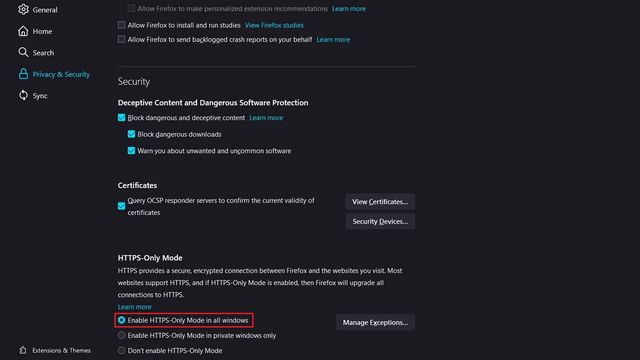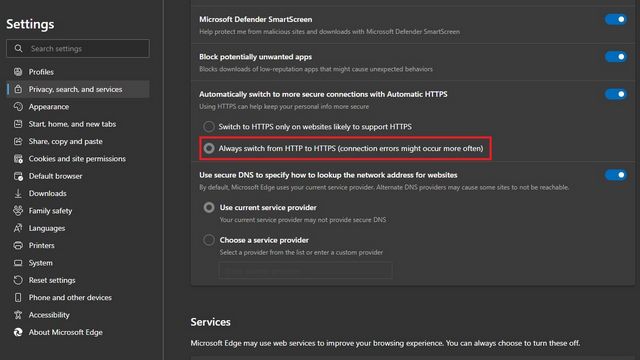The Internet is constantly evolving and something that is essential for it to improve is to increase user privacy and security. In this way, the HTTPS protocol was adapted on the websites, thanks to this all the data that we enter on said website is encrypted; which means that third parties cannot access these and if they do, they will only see code that is not understandable in any way. That is why it is very important enable HTTPS only mode in Chrome, Firefox, and Edge; in order to protect our privacy.
Enable HTTPS only mode in Google Chrome

The first thing we will have to do is go to the menu that is in the upper right corner of the browser, we will press on the three vertical points and a new submenu is displayed. Among all the options we select “Configuration”.

Here we are going to have to change to the “Privacy and security” section that is in the left sidebar and then we will click on “Security” in the right panel.

Then we scroll down until we find “Configuration or advanced options” and we are going to enable the option “Always use secure connections”. In this way, Chrome will try to redirect all the websites that we visit to the HTTPS version of it.
Enable HTPPS only mode in Firefox

For Firefox users, we will have to click on the three horizontal lines that are in the upper right corner of the screen. Among all the options that appear, we will choose “Configuration”.

We go to the “Privacy and security” section, here we look for “HTTPS only mode” and when we are here, we are going to choose the option “Enable HTTPS only mode in all windows”.
We also have the ability to choose exceptions for certain websites. For this we are going to click on “Manage exceptions” and add the URL addresses that will be allowed, then click on “Save changes”.
HTTPS only mode in Microsoft Edge
In the case of Edge, you have not yet found this option enabled. It is found in the flag options, but it is easy to access.
For this we will have to enter in the address bar “Edge: // flags” without the quotes and press “Enter”.

We search from the search engine “Automatic HTTPS” and from the drop-down menu on the right, we are going to select “Enable”.

We restart the browser and then we will click on the three horizontal points that are in the upper right part of the browser, we will choose “Settings”.

Next, we go to “Privacy, search and services” in the sidebar and enable the option “Automatically switch to more secure connections with automatic HTTPS”. We also recommend choosing the option “Always switch from HTTP to HTTPS (Connection errors can happen more frequently)”.



